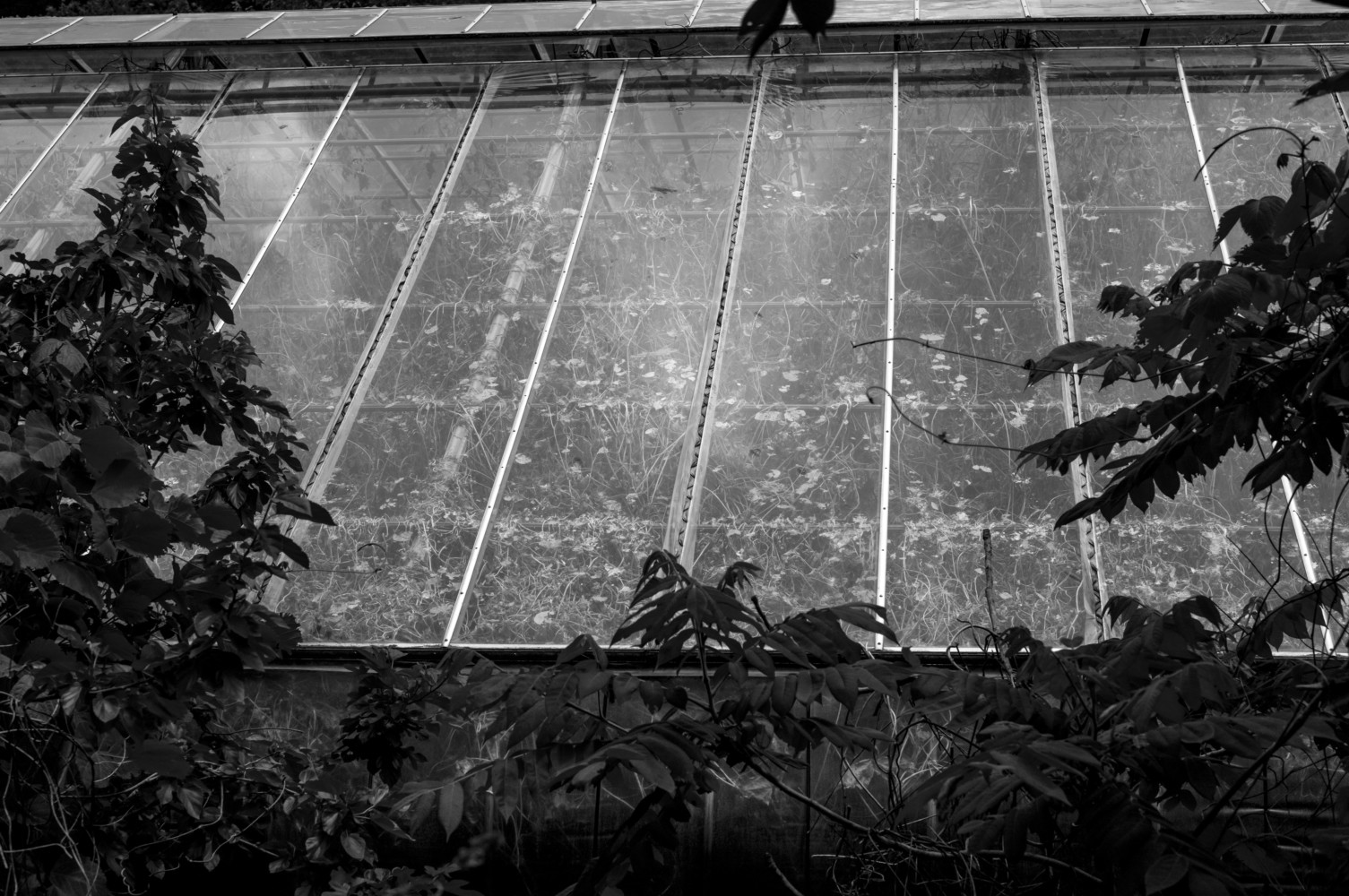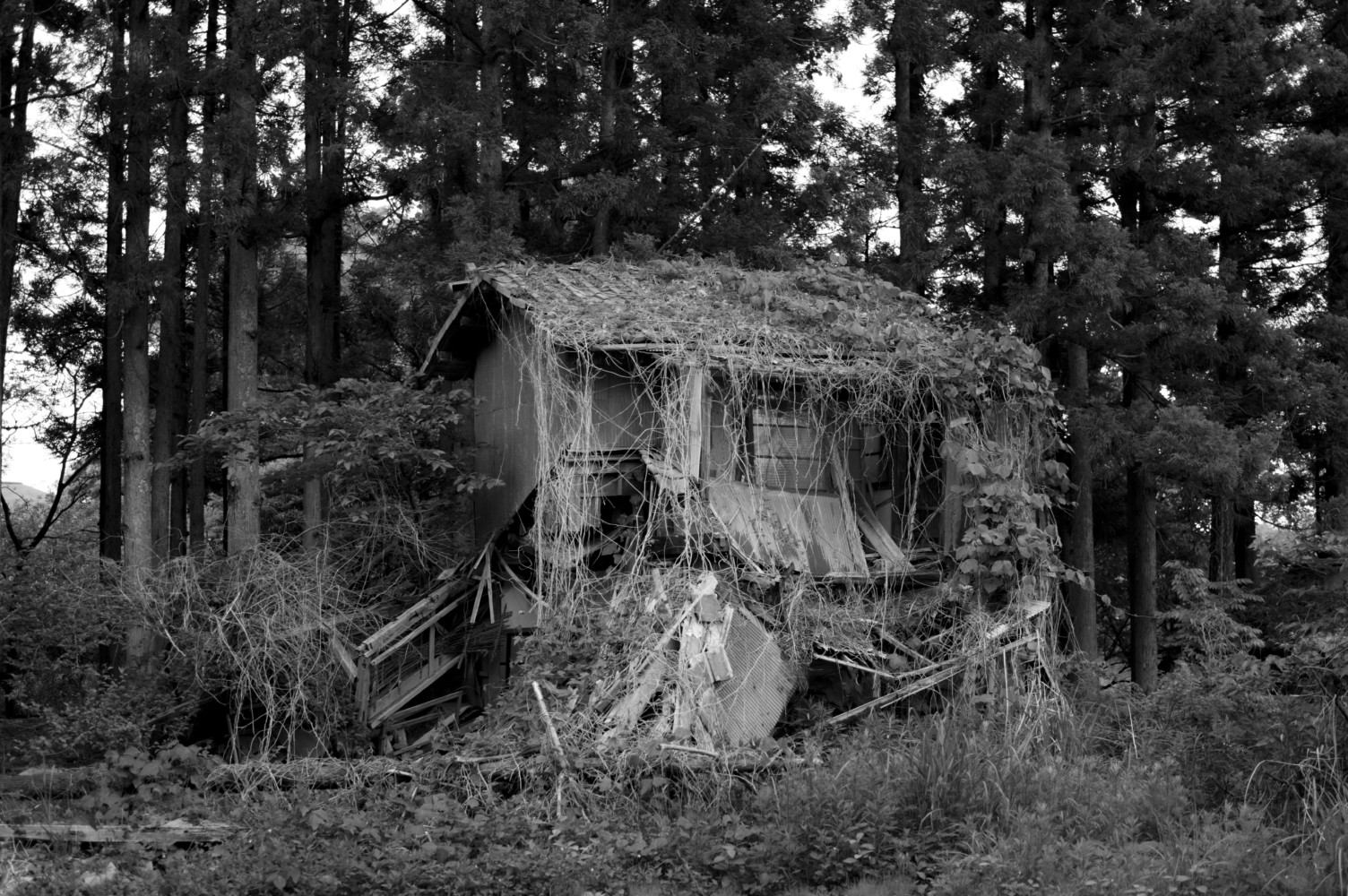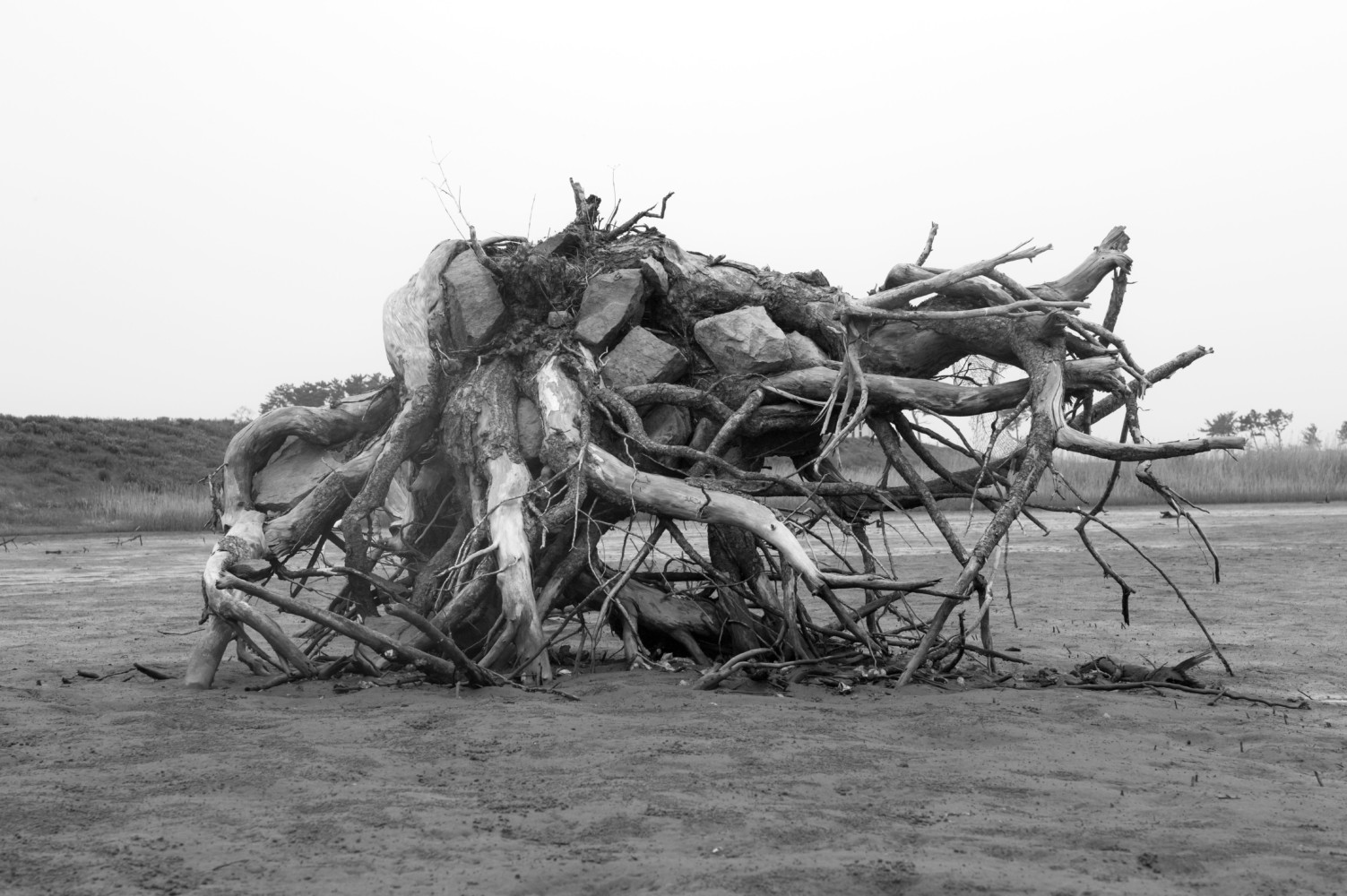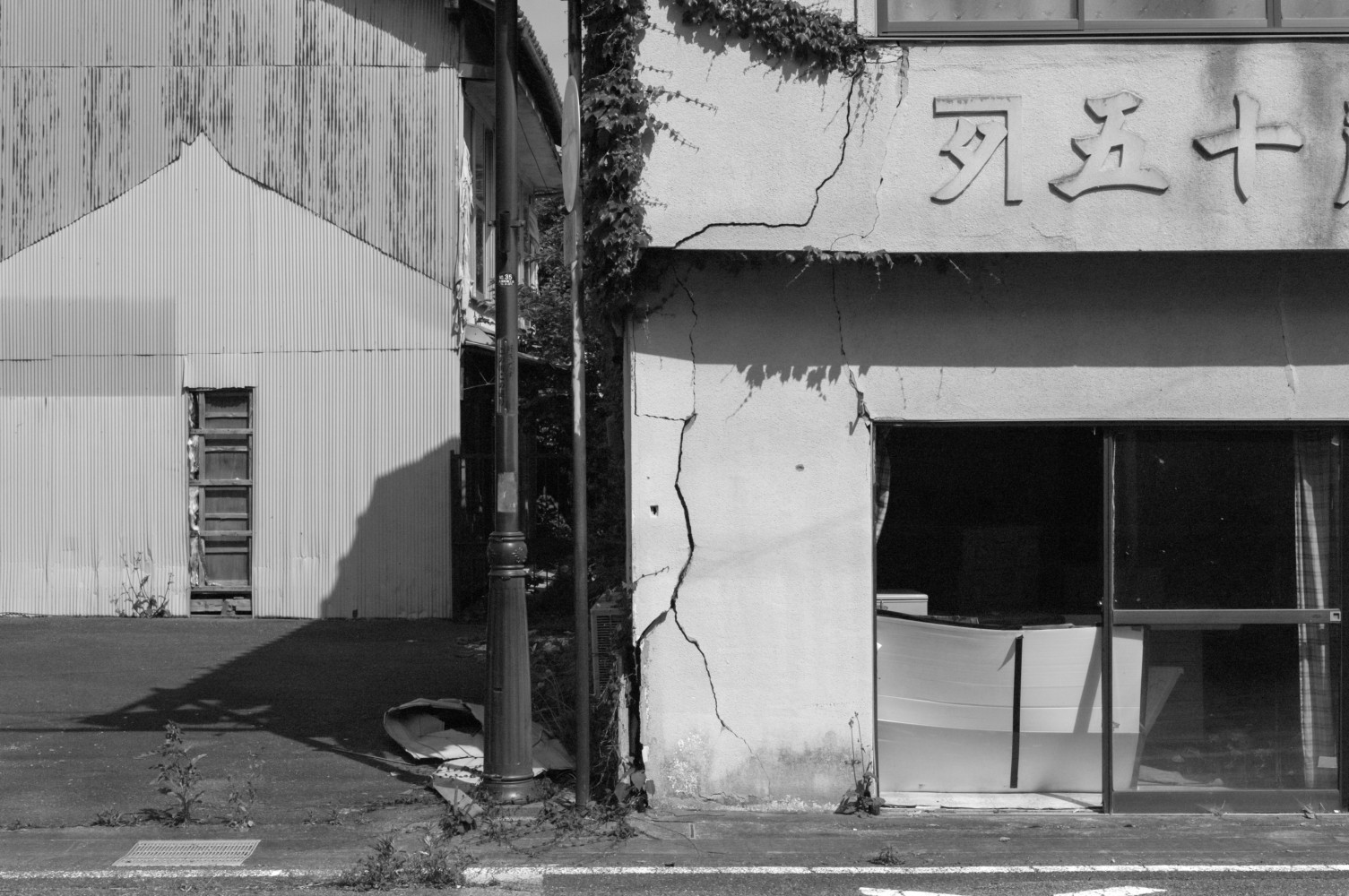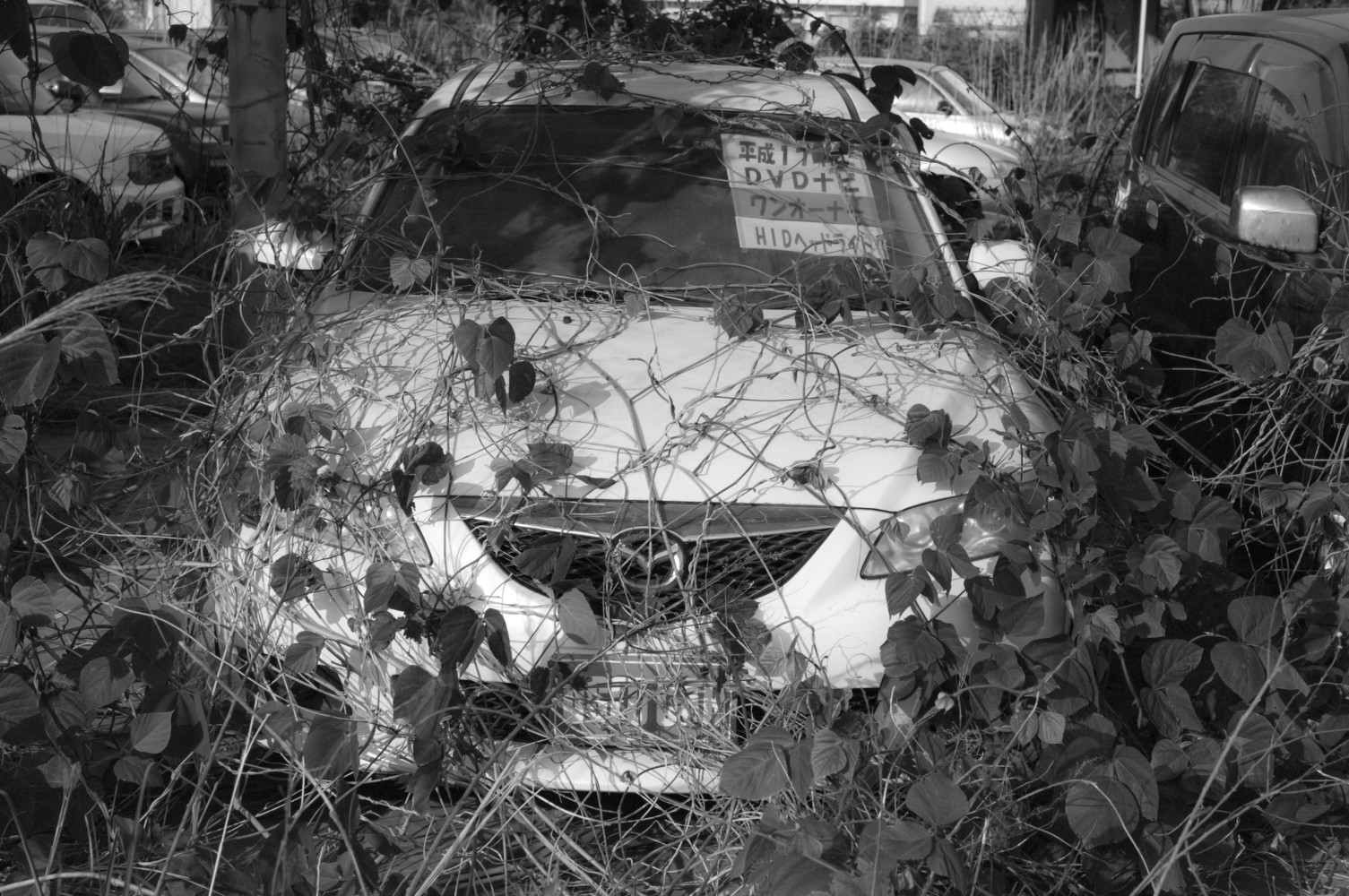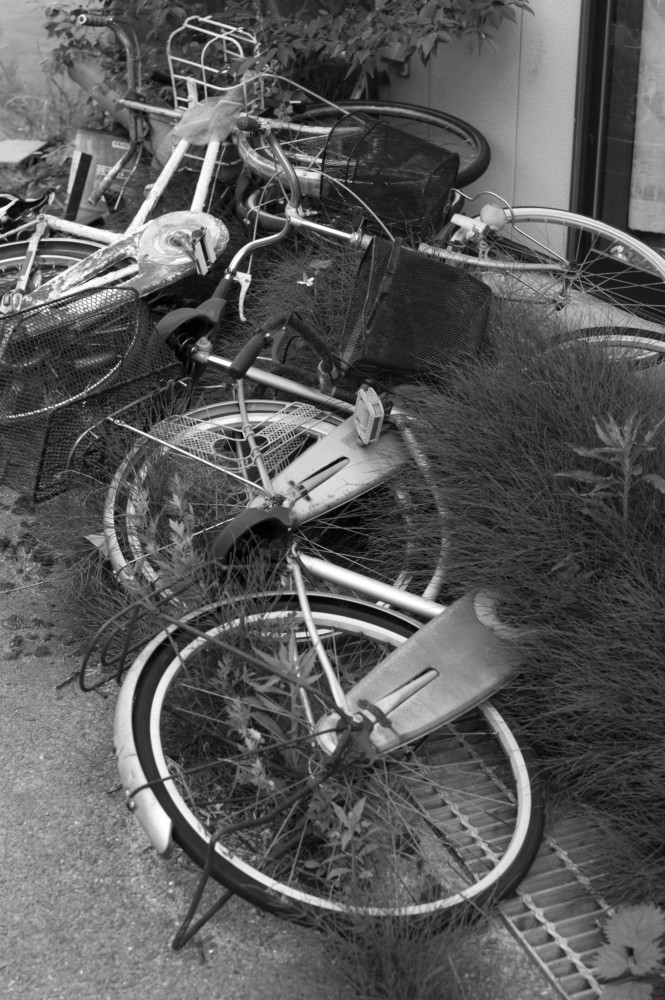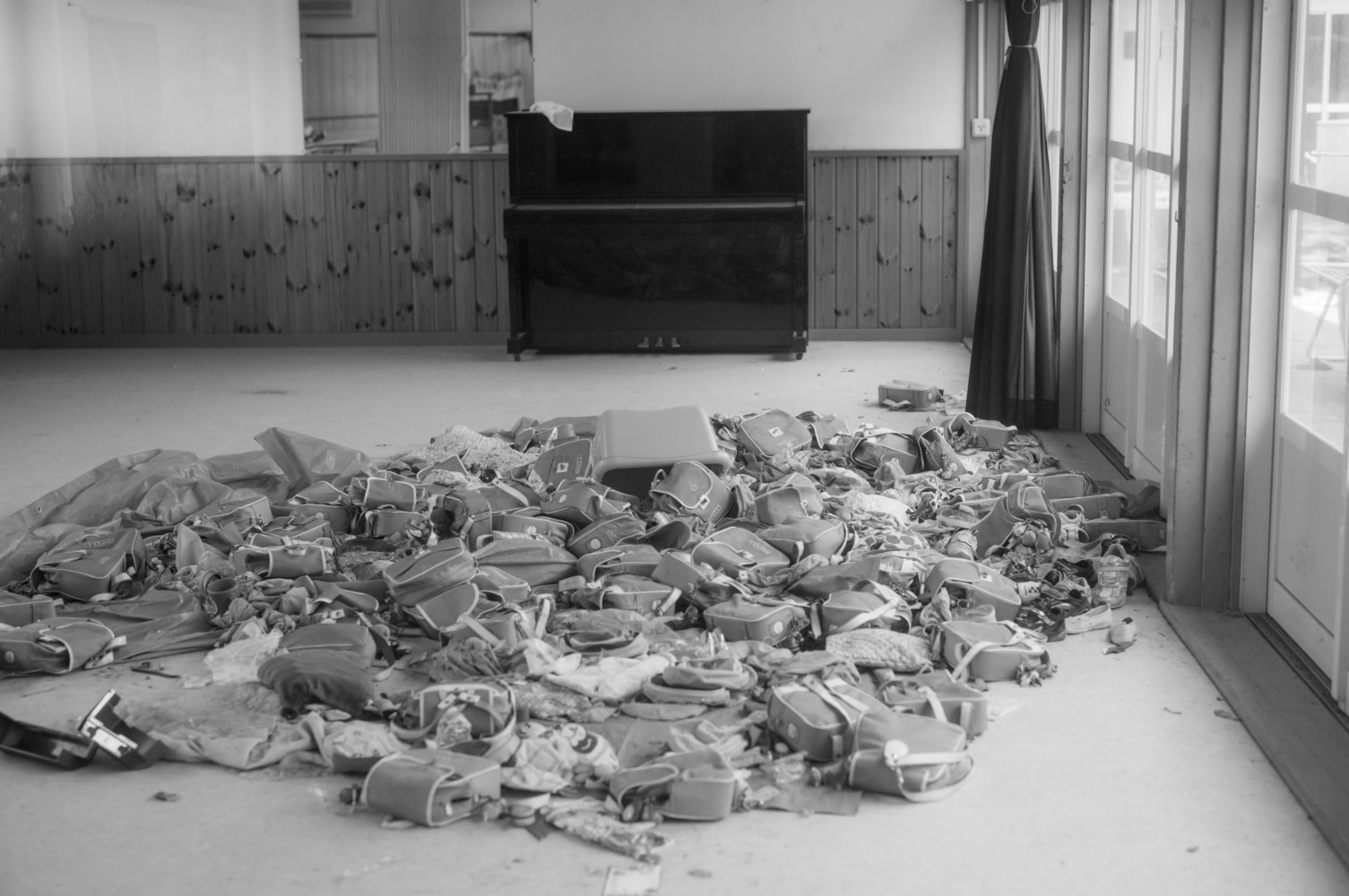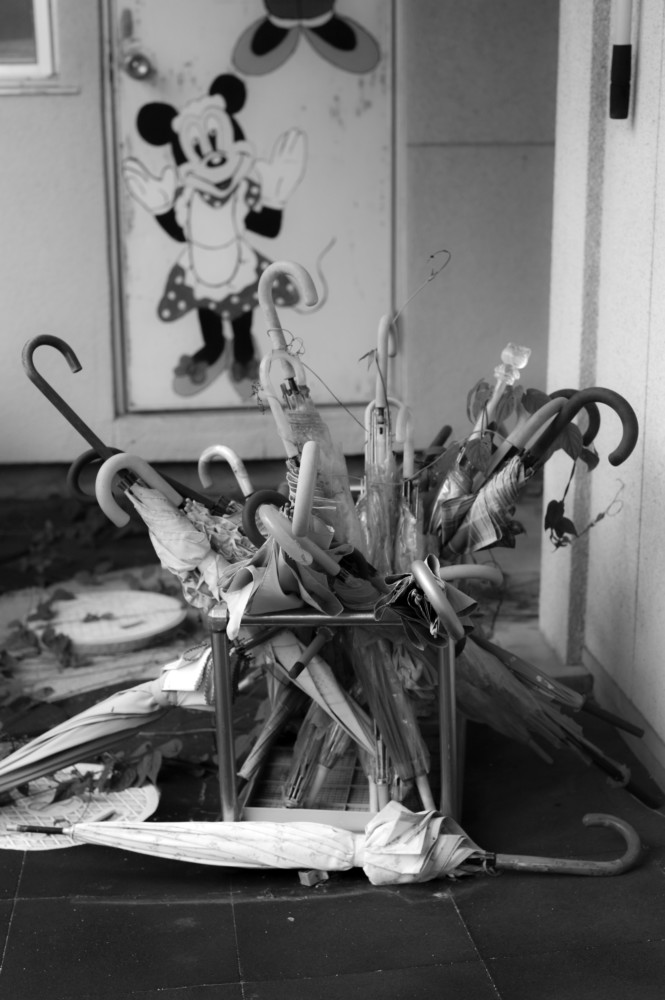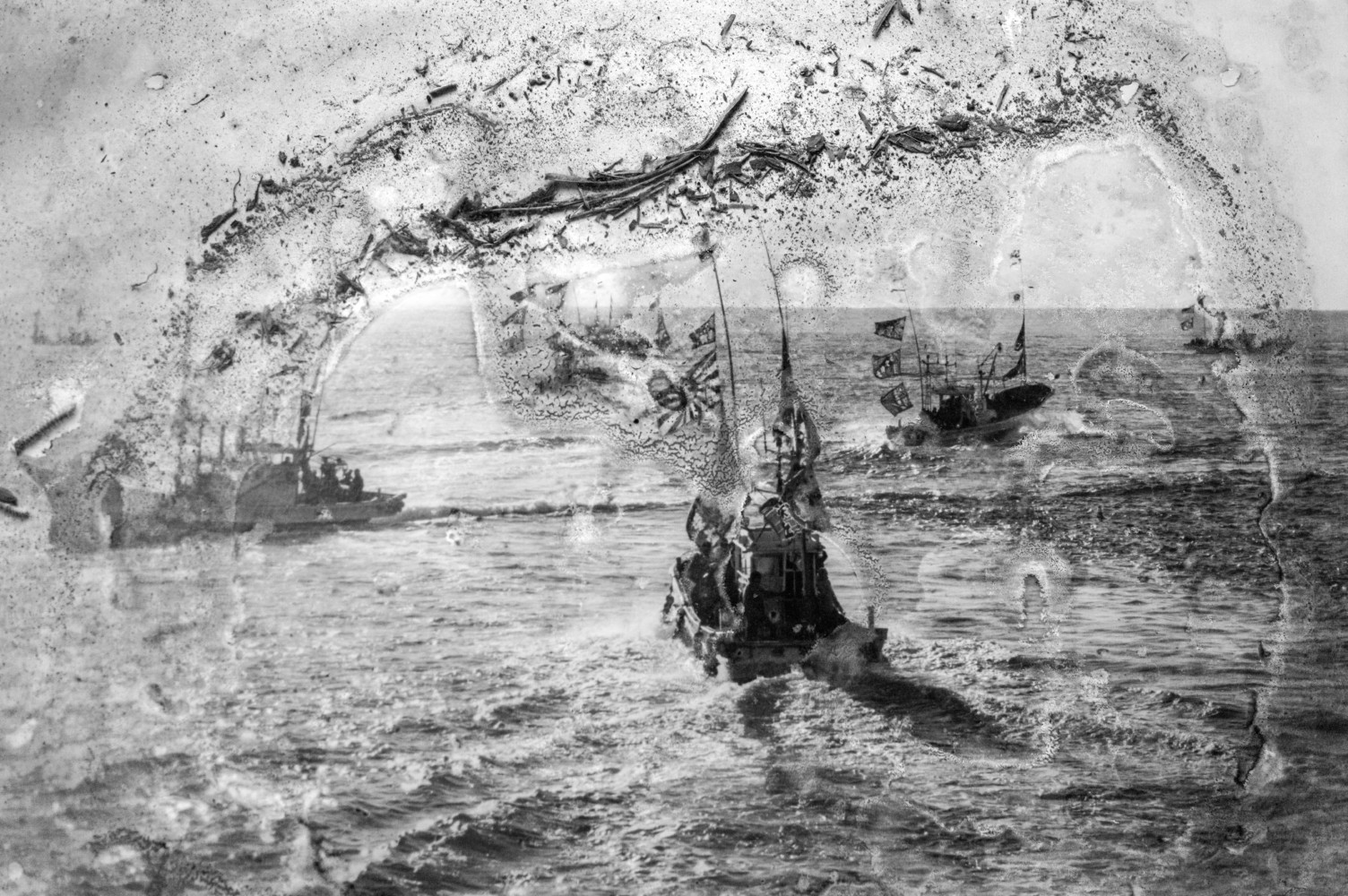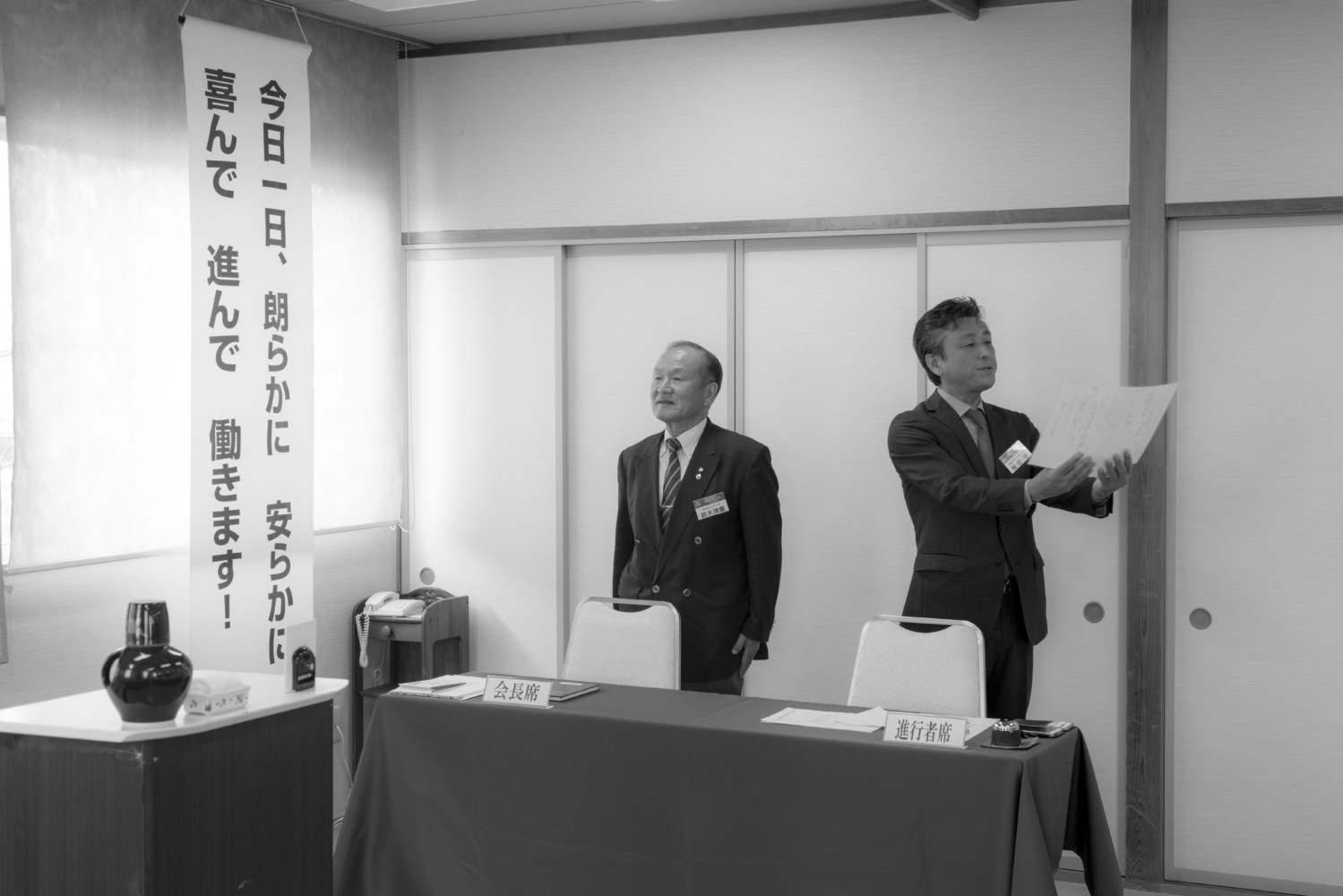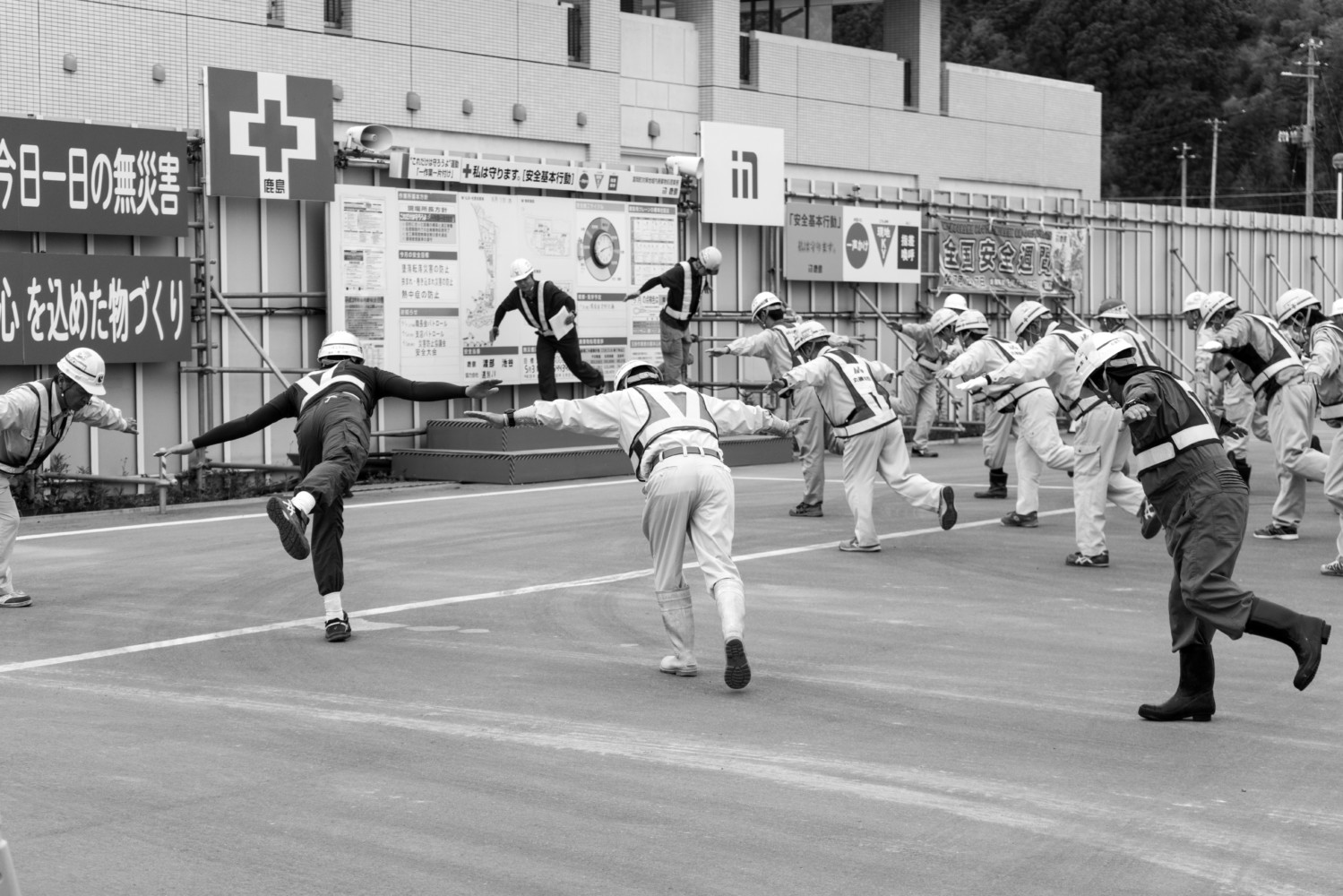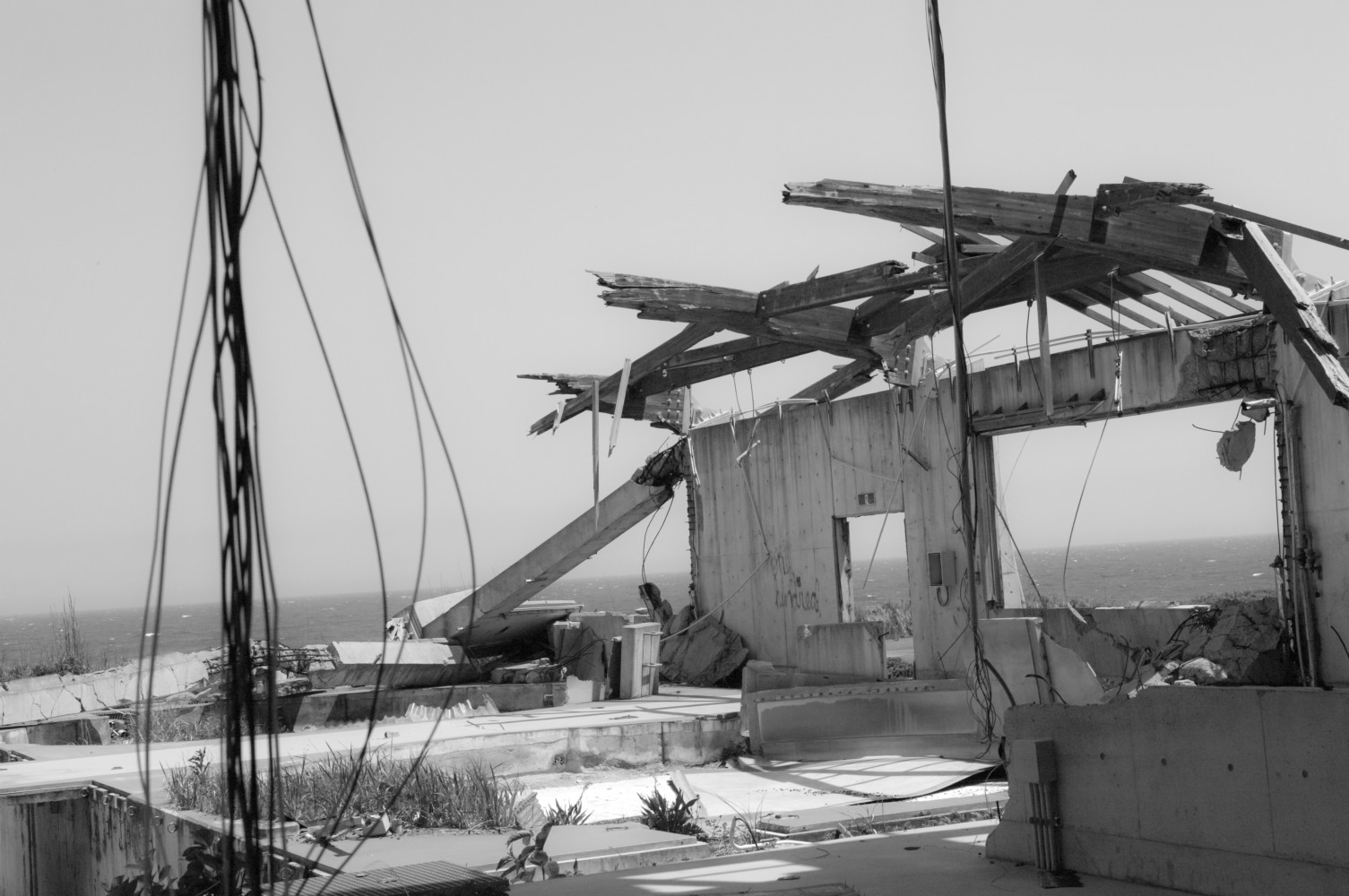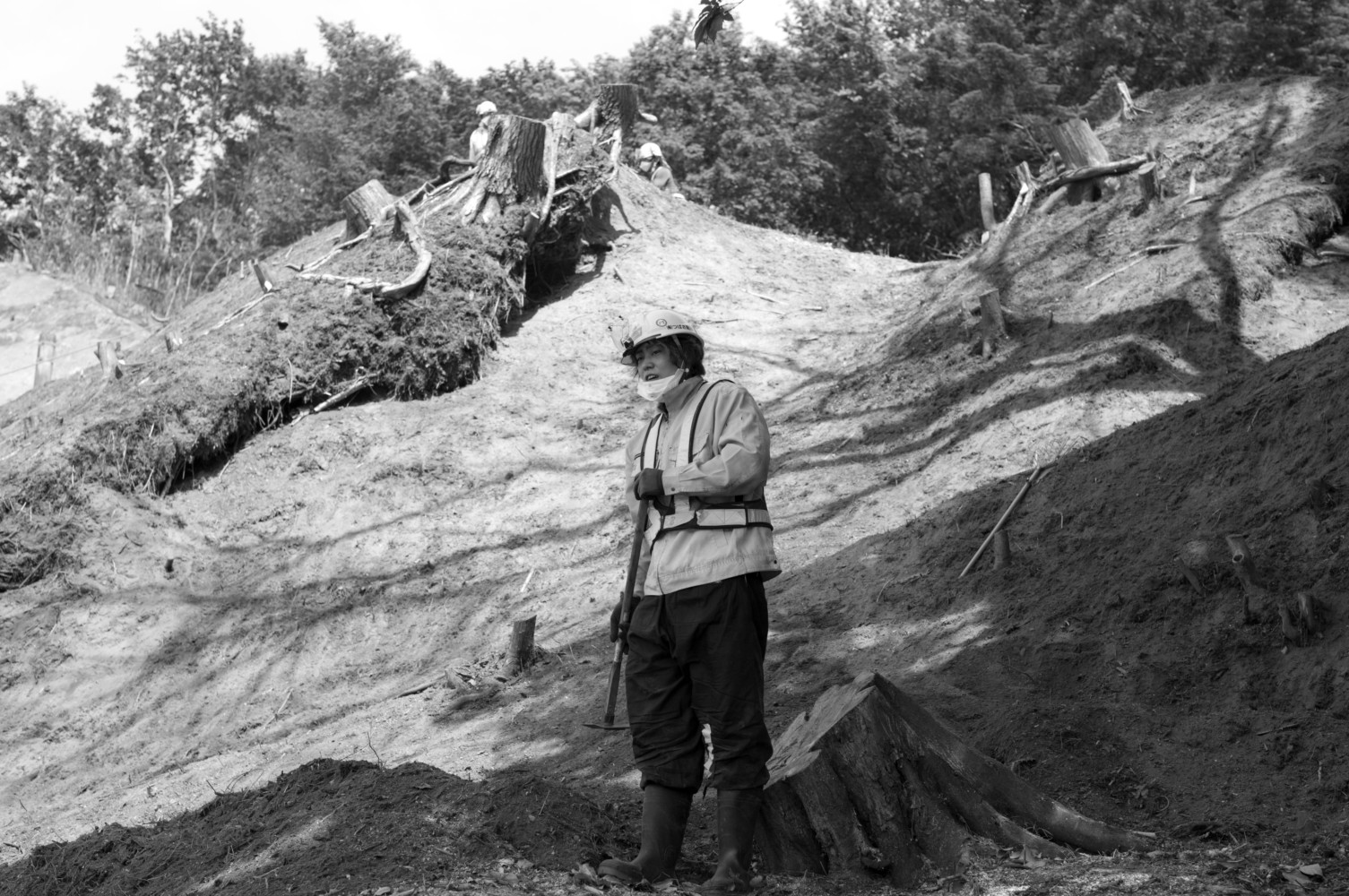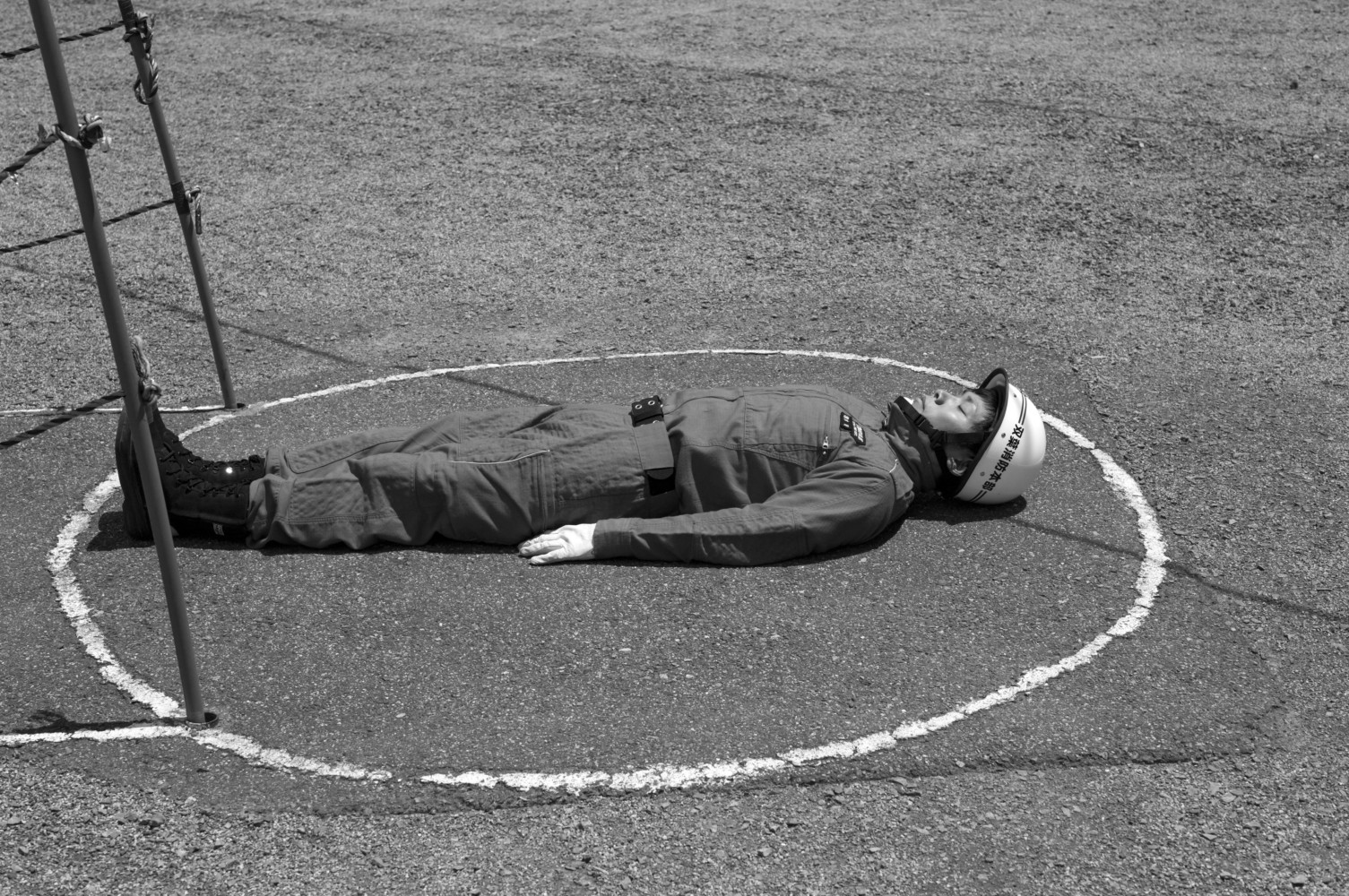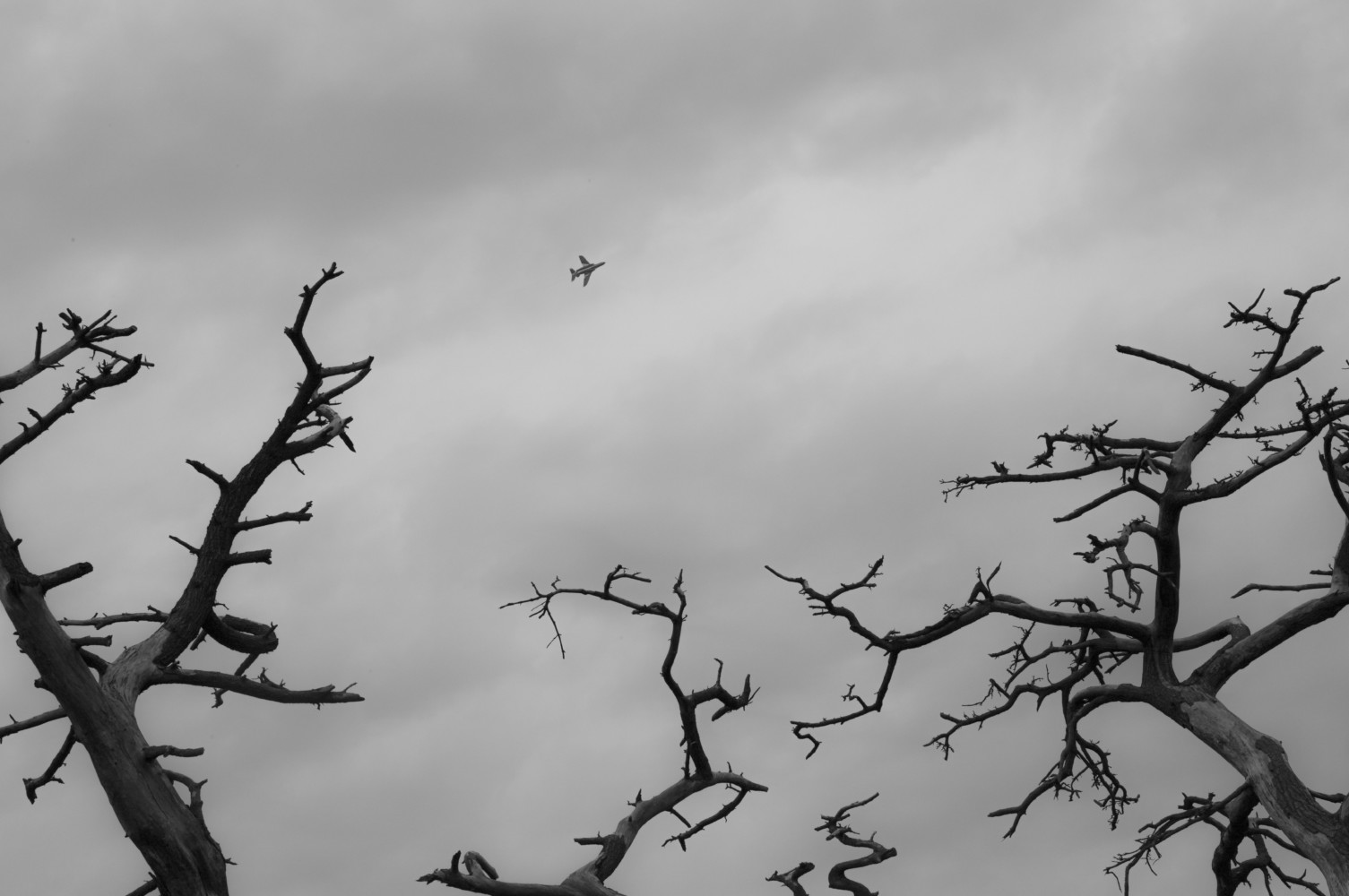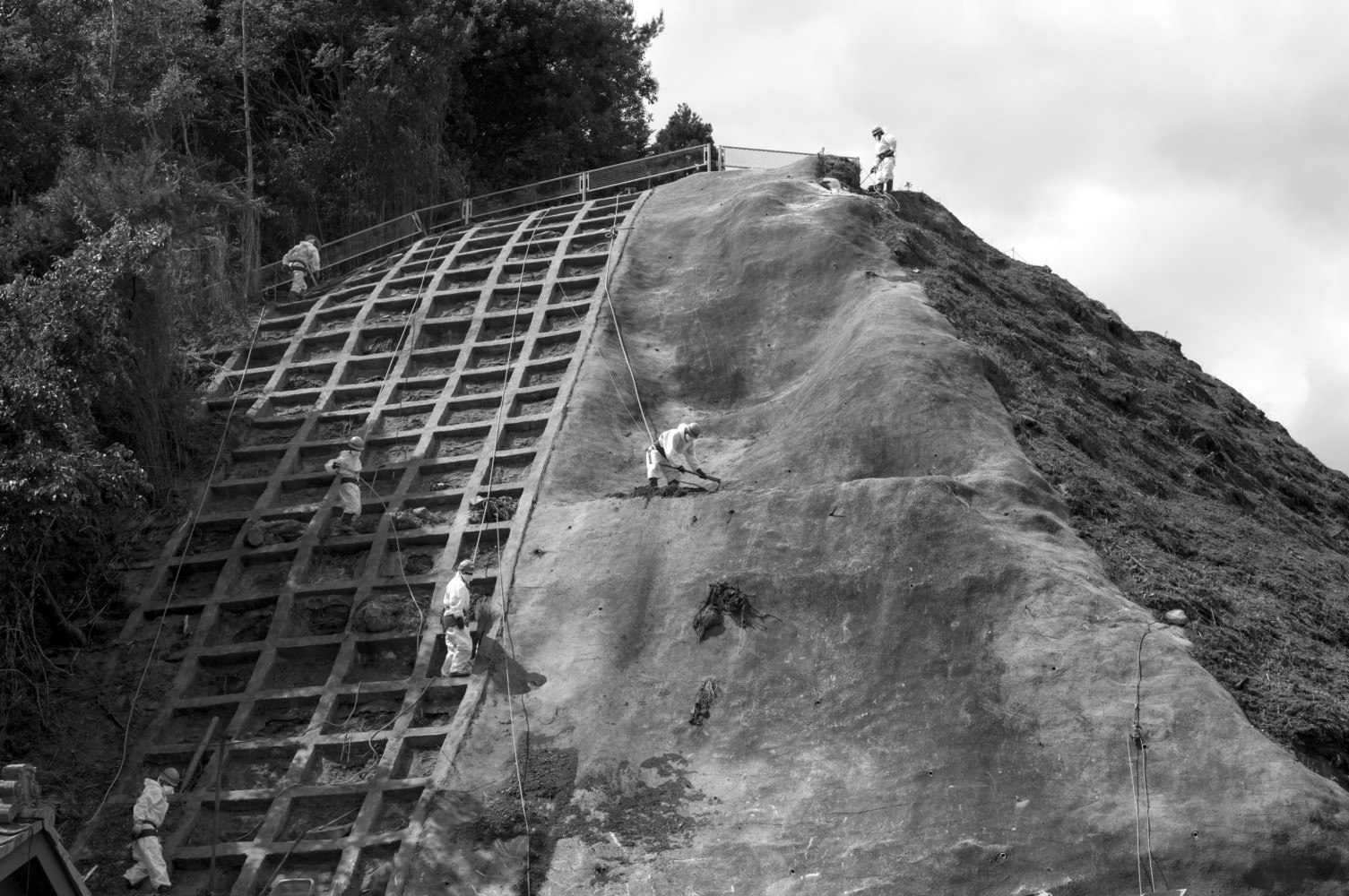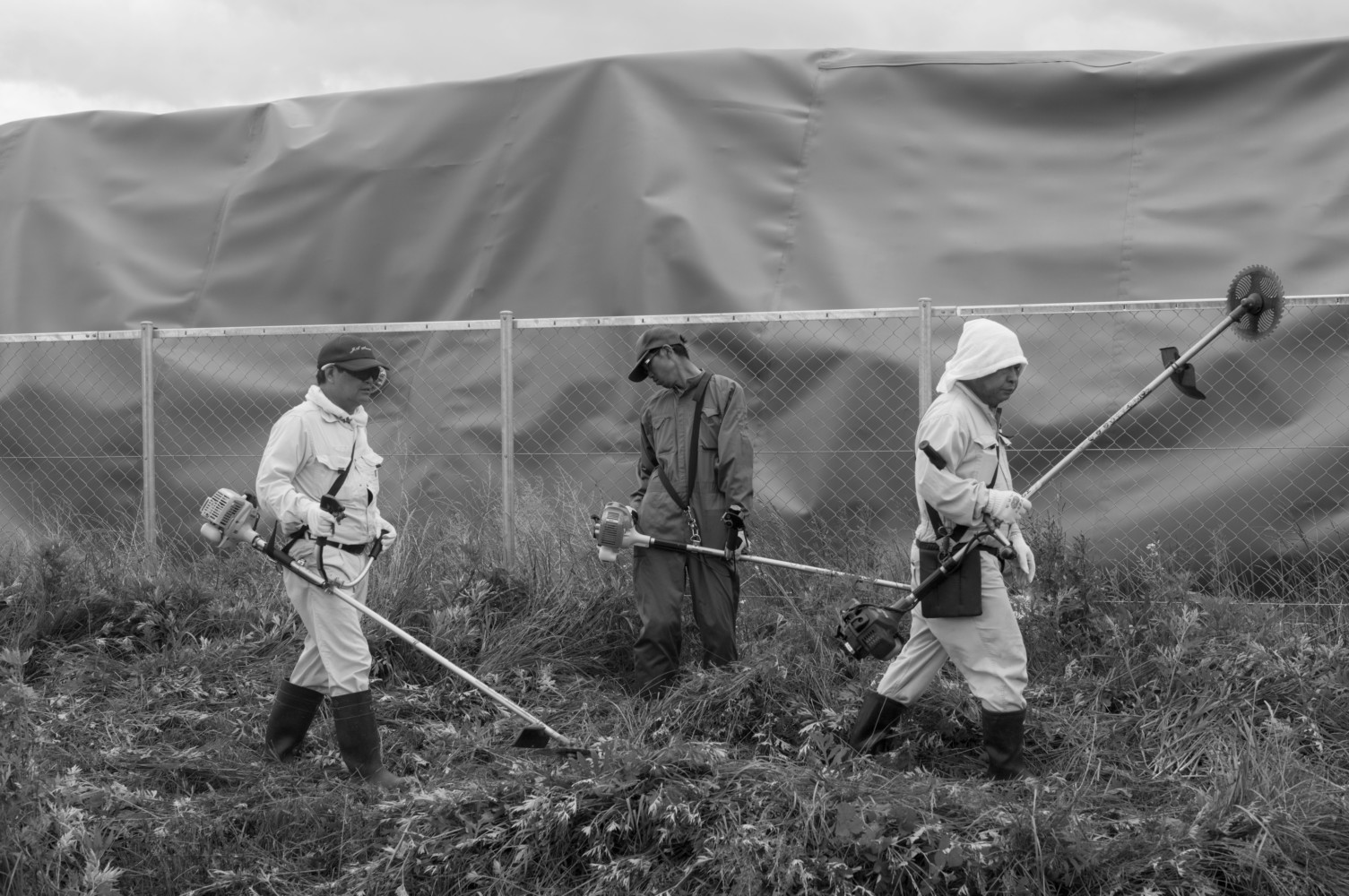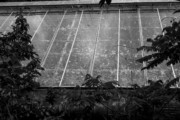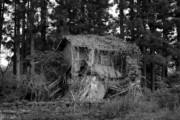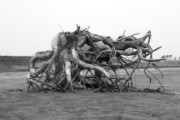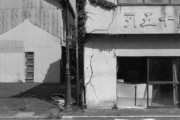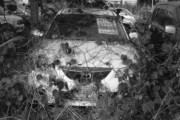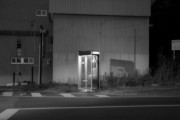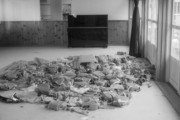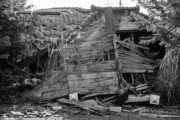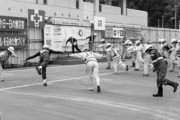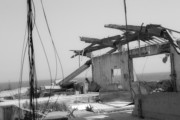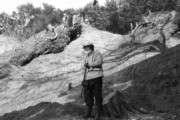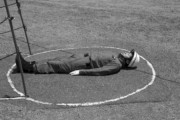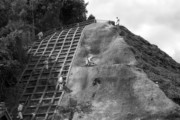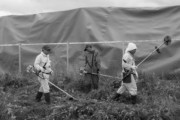Moises Saman A house covered in wild vegetation overgrowth in the town of Tomioka, Fukushima Prefecture. Tomioka was severely affected by the Fukushima Daiichi nuclear disaster, and the 2011 Tohoku earthquake a (...)
nd tsunami on March 11, 2011. As well as sustaining considerable damage from the earthquake, and the tsunami (which devastated the coastal area), the town was evacuated en masse on the morning of March 12, 2011.
On March 25, 2013, the nuclear evacuation zone in Tomioka was lifted by the central government, and the town was re-zoned into three areas according to different levels of radiation. However, the town government elected to keep the evacuation in place for at least another four years because of the need to rebuild damaged infrastructure. In the zone with the highest radiation levels, residents will not be allowed to return home for at least five years. People other than registered residents are banned from entering. This zone, which covers the northeastern part of the town, had about 4,500 residents. The central part of the town, which used to have 10,000 residents was designated as a restriction zone, in which the residents could return during daytime hours but have to leave at night. The remaining zone, which mainly covers southern Tomioka had about 1,500 residents, and remaining restrictions are expected to be lifted. Tomioka, Fukushima Prefecture. June 6, 2017. © Moises Saman | Magnum Photos
Moises Saman School backpacks litter the floor of an elementary school located in the town of Futaba, Fukushima Prefecture, six years after the school and the entire town was evacuated in the aftermath of the 2 (...)
011 tsunami and nuclear disaster. Futaba, Fukushima Prefecture, Japan. May 22, 2017. © Moises Saman | Magnum Photos
Moises Saman Local business leaders in the town of Minamisoma, Fukushima Prefecture, attend a workshop on business ethical management at a local hotel in Minamisoma. Since the summer of 2016, life is slowly ret (...)
urning to normal in Minamisoma. In July of 2016 some 10,000 Minamisoma residents were officially permitted to return home after Fukushima nuclear disaster evacuation orders covering parts of the city were lifted. Minamisoma, Fukushima Prefecture, Japan. June 6, 2017. © Moises Saman | Magnum Photos
Moises Saman Workers involved in the reconstruction efforts along the Fukushima Prefecture coast, in the aftermath of the 2011 tsunami and nuclear disaster, perform group physical and safety exercises before th (...)
e start of their work day.
Tomioka was severely affected by the Fukushima Daiichi nuclear disaster. Besides sustaining considerable damage from the earthquake, and the tsunami (which devastated the coastal area), the town was evacuated en masse on the morning of March 12 as it is located well within the 20 kilometer exclusion radius around the damaged Fukushima Daiichi nuclear power plant. Tomioka, Fukushima Prefecture, Japan. June 7, 2017. © Moises Saman | Magnum Photos
Moises Saman Graffiti written on the wall of an abandoned fish farm near the the Fukushima Daiichi Nuclear Plant in the town of Okuma, Fukushima Prefecture. The earthquake and tsunami caused severe damage to Ok (...)
uma, especially devastating coastal areas. The tsunami hit and flooded the Fukushima Daiichi Nuclear Power Plant, located on the Pacific coast of Okuma, and set off the Fukushima Daiichi nuclear disaster. By the following morning, the Japanese government had ordered residents to evacuate to outside of a 10 km radius of the power plant. Okuma, Fukushima Prefecture, Japan. May 23, 2017. © Moises Saman | Magnum Photos
Moises Saman A cleanup crew of workers collect and remove contaminated radioactive soil from the town of Namie, Fukushima Prefecture, six years after the nuclear disaster.
Namie was severely affected by the F (...)
ukushima Daiichi nuclear disaster, and parts of the town continue to be off limits to its former residents six years after the accident. Namie, Fukushima Prefecture, Japan. May 22, 2017. © Moises Saman | Magnum Photos
Moises Saman A firefighter from the Futaba Fire Department, in Fukushima Prefecture, lies on the ground playing the role of an injured person during a rescue drill at a firehouse in the town of Futaba.
Futaba (...)
was severely affected by the Fukushima Daiichi nuclear disaster, and the 2011 Tohoku earthquake and tsunami on March 11, 2011. Besides sustaining considerable damage from the earthquake, and the tsunami (which devastated the coastal area), the town was evacuated en masse on the morning of March 12, 2011, as it is located well within the 20 kilometer exclusion radius around the damaged Fukushima Daiichi nuclear power plant. On April 1, 2017, residents were allowed to return to the town, although a poll indicated over half did not intend to do so. Futaba, Fukushima Prefecture, Japan. June 5, 2017. © Moises Saman | Magnum Photos
Moises Saman A Japanese fighter jet flies low over a shrine and memorial for the citizens that died in the 2011 tsunami. The city of Ishinomaki that was one of the hardest hit during the 2011 tsunami. As of Jun (...)
e 17 2011, a total of 3,097 deaths had been confirmed in Ishinomaki due to the tsunami, with 2,770 still missing. Approximately 29,000 city residents lost their homes. Ishinomaki, Miyagi Prefecture, Japan. May 24, 2017. © Moises Saman | Magnum Photos
Moises Saman A cleanup crew of workers collect and remove contaminated radioactive soil from the town of Namie, Fukushima Prefecture, six years after the nuclear disaster.
Namie was severely affected by the F (...)
ukushima Daiichi nuclear disaster, and parts of the town continue to be off limits to its former residents six years after the accident. Namie, Fukushima Prefecture, Japan. May 22, 2017. © Moises Saman | Magnum Photos
Moises Saman Local volunteers cut the vegetation overgrowth near a contaminated soil storage facility in the town of Iitate, Fukushima Prefecture.
Iitate suffered from moderate damage from the 2011 Tohoku ea (...)
rthquake, and was located outside the nominal 30 kilometres (19 miles) radiation exclusion zone of the Fukushima Daiichi nuclear power plant. However, as a result of wind patterns following the Fukushima Daiichi nuclear disaster, on 30 March 2011, the International Atomic Energy Agency stated that its operational criteria for evacuation were exceeded in Iitate, despite the village being outside the existing radiation exclusion zone around the plant. As a result, the entire population of the village was evacuated by government order on 22 April 2011, and to this day most residents have not returned. Iitate, Fukushima Prefecture. June 4, 2017. © Moises Saman | Magnum Photos
